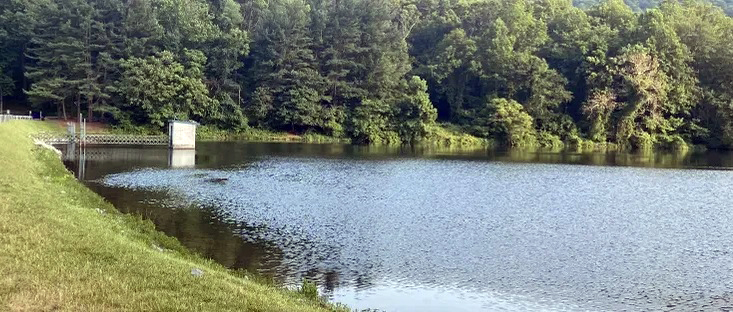
Looking Back

Emmitsburg Goes Dry
by James Rada
Things were pretty dry in Frederick County in November 1974. Rain hadn’t fallen in weeks, and the county had placed a leaf-burning ban in effect to try to avoid an out-of-control fires.
Meanwhile, Emmitsburg town staff watched as the water level at Rainbow Lake continued dropping. When it reached the point where Emmitsburg had only a two-week supply of water, drastic actions had to be taken.
Instead of taking water from the reservoir, local fire companies from Emmitsburg, Harney, Taneytown, Thurmont, Fairfield, Fountaindale, and Blue Ridge Summit started putting it in.
“About 60,000 gallons of water were carried to the reservoir, which now measures 60” below the spillway, 10” lower than last week at this time,” the Emmitsburg Chronicle reported.
This was the first phase of a three-part program Commissioner J. Norman Flax spearheaded to fight the water shortage. Another part of the first phase was to have firemen pump water from Summit Lake to the top reservoir, a distance of a quarter mile. Nearly 100 firefighters worked from 6 a.m. to 4 p.m. to pump the water.
This would pump another 300,000 gallons into the reservoir, which represented roughly a day’s supply for the town.
As part of the second phase, an emergency pump was placed in Toms Creek to send water 2.5 miles to the reservoir on Hampton Valley Road, where it would go into a filtration plant. Vigilant Fire Company Chief Eugene Myers said the town was expected to receive a large civil defense pump to pump the water through a 10-inch line. The problem was that it would take a week to get the pump installed and into operation.
This wasn’t the first time Emmitsburg had faced such a problem. In 1965, with the town dealing with a drought, volunteer firefighters had to relay water until they could get a portable pump installed.
“As part of the second phase, a new control valve must be bypassed and replaced on West Main Street in Emmitsburg,” the Chronicle reported. “About seven homeowners will be affected by this transition, and will need to boil their drinking water due to possible contamination.”
The third phase of Commissioner Flax’s program involved charging Mount St. Mary’s College, Saint Joseph’s College, and out-of-town users higher water rates based on their consumption. According to the town’s numbers, the colleges used half of the town’s water (19 million gallons during the third quarter of 1974), but only paid 38 percent of the water costs.
Mount St. Mary’s also stepped up to help during this crisis and closed a week early for Thanksgiving vacation. “Dr. Dillon, in talking with Mayor Sprankle, agreed that a longer Thanksgiving vacation would help alleviate Emmitsburg’s water shortage.
The efforts of local firefighters to increase the water supply and townspeople to conserve their water usage worked until the town got rain and snow.
